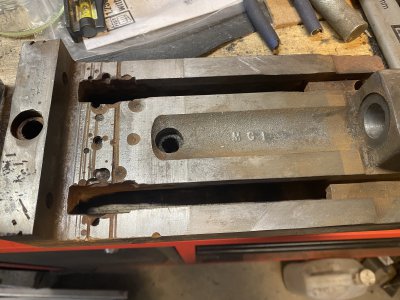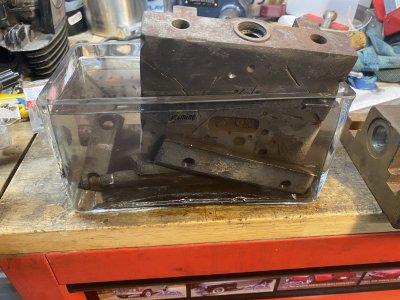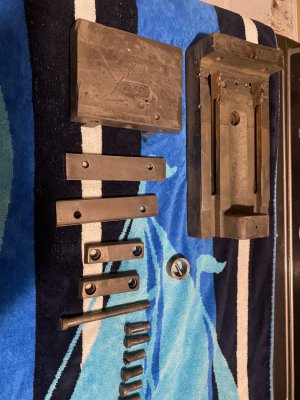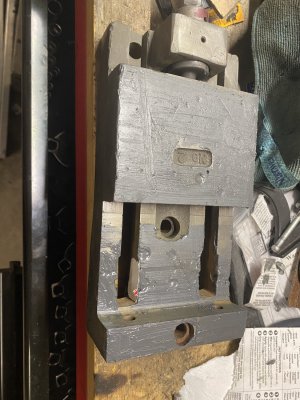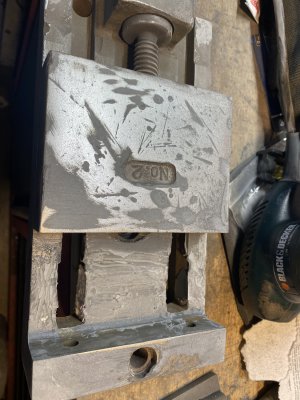- Joined
- Jan 25, 2015
- Messages
- 2,558
The low spots for me are mostly appearance and I suppose I could try and justify it by saying it would make cleaning easier (but I won’t, its purely a cosmetic thing for me).Sorry, but you seem to be hung up on filling the low spots. Low spots really don't matter as long as your part, or the parallels, can bridge them and keep the part in the same plane as the bed of the machine. Trying to fill them with braze or JB Weld or whatever brings a high probability of creating high spots which will ensure the vise is no longer co-planar.
Another key issue is the moving jaw. Wear in the guides will allow the jaw to lift as you tighten it. That's bad as it probably tilts the part. In the worst case, the part isn't being held very securely.
As others have said, clean up the vise and check how it operates. If it excessively worn or banana-shaped, you won't be happy using it with a milling machine. To really rehab an old vise, I think you'd need a surface grinder.
Craig
(And I believe I saw that Busybee has their 5 inch vise on sale right now...)
Plan is to tear it down to its last bolt, into the ultrasonic for a day or so, repair what I can, turn a blind eye to what I can’t, a lick of paint, back together and whatever fine adjustments I can do to make it as good as it can be.
It may also turn in to an opportunity for me to learn scraping. Or build a surface grinding attachment for the new mill.
Often, its about learning new skills for me as it is repairing/rebuilding/building whatever item is in front of me at the time.


